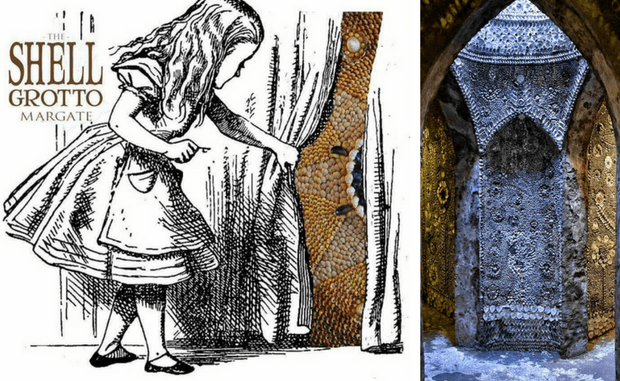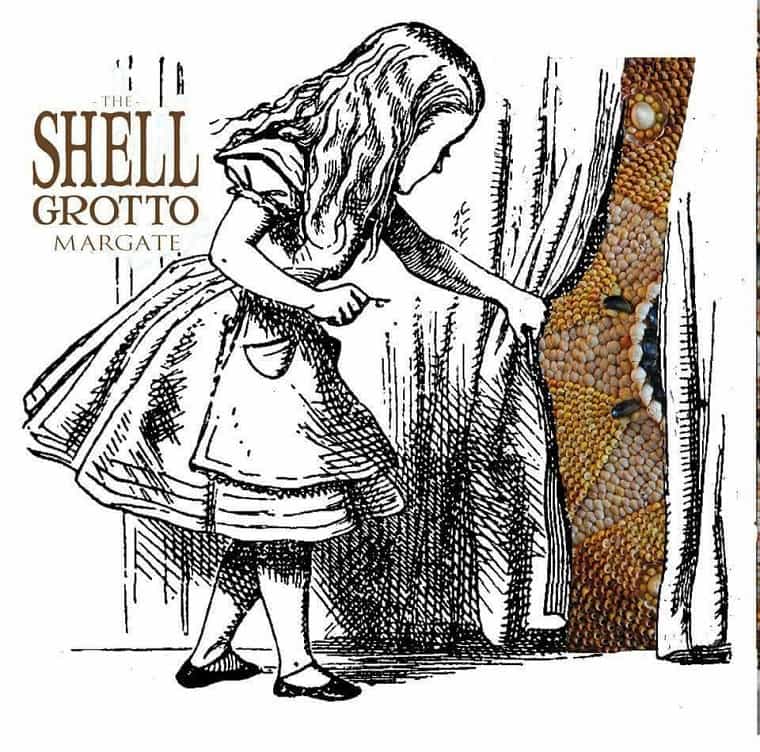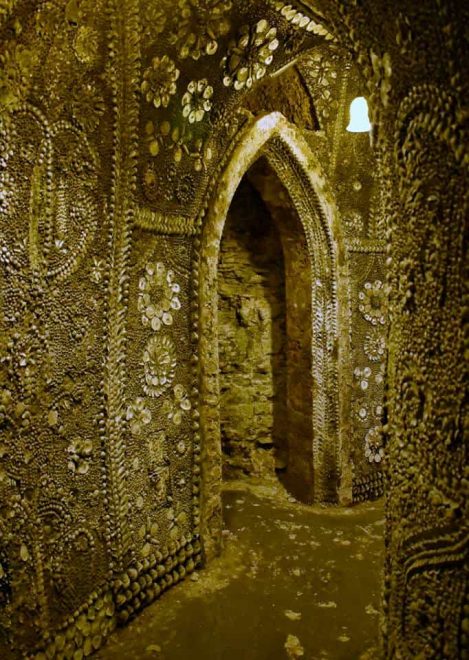
On this day (September 28) in 1870 Victorian author Lewis Carroll visited the Shello Grotto in Margate.
The Alice in Wonderland novelist described it in his diaries as “a marvellous subterranean chamber, lined with elaborate shell-work”.

Discovered in 1835, Margate’s Shell Grotto is 21 metres of winding passages decorated with 4.6 million shells. The walls are covered in images of gods and goddesses, trees of life and patterns of whelks, mussels and oysters. It terminates in a rectangular room, referred to as The Altar Chamber.
Some think it is an ancient Pagan grotto, others that it is simply an ornate Regency folly, although it lies under former farmland that was never part of an estate. Its true origins have never been discovered.

The most frequently used shells in the site, Grade I listed in 1973, are mussels, cockles, whelks, limpets, scallops and oysters. They are largely local. They could have been found in sufficient numbers from four possible bays: Walpole Bay in Cliftonville; Pegwell Bay, Cliffsend and Sandwich Bay.
Photos Carole Adams
The majority of the mosaic is formed from the flat winkle, which is used to create the background infill between the designs. This shell is rarely found locally so would have been collected from shores west of Southampton. There are also some exotic shells such as Queen Conchas from the Caribbean in the Altar Room.
The earliest reference to the discovery appears in an article in the Kentish Gazette of 22 May 1838, announcing its forthcoming opening as a public attraction. It has remained in private ownership ever since.
Photos Carole Adams
In 1932, the then new owner took over the Grotto, and soon afterwards substituted electric lighting for the gas lighting that, over the decades, had blackened the once-colourful shells. Cleaning trials show that in the majority of the Grotto the shells have lost their colour under the dirt and are white.
Photos Carole Adams
The structure has also suffered the effects of water penetration but was removed from the Buildings at Risk Register in 2012 after a five-year conservation programme, carried out in partnership with English Heritage. A scheme to sponsor replacement mosaic panels – The Roundel Project – was established in 2012.

The Friends of the Shell Grotto were formed in 2008 and are a not-for-profit trust established to promote, conserve, and preserve the Grotto as a unique historical monument.
Where is it?

Grotto Hill, Margate
When is the Grotto open?
Photos Carole Adams
Every day 10am to 5pm until October 29. Winter opening hours are weekends 11am to 4pm.
Tickets
Adults £4, £3.50 concessions, £1.50 children aged 4-16. Amily ticket for 2 adults, 2 children £8. Children under 3 get in free.
Information









